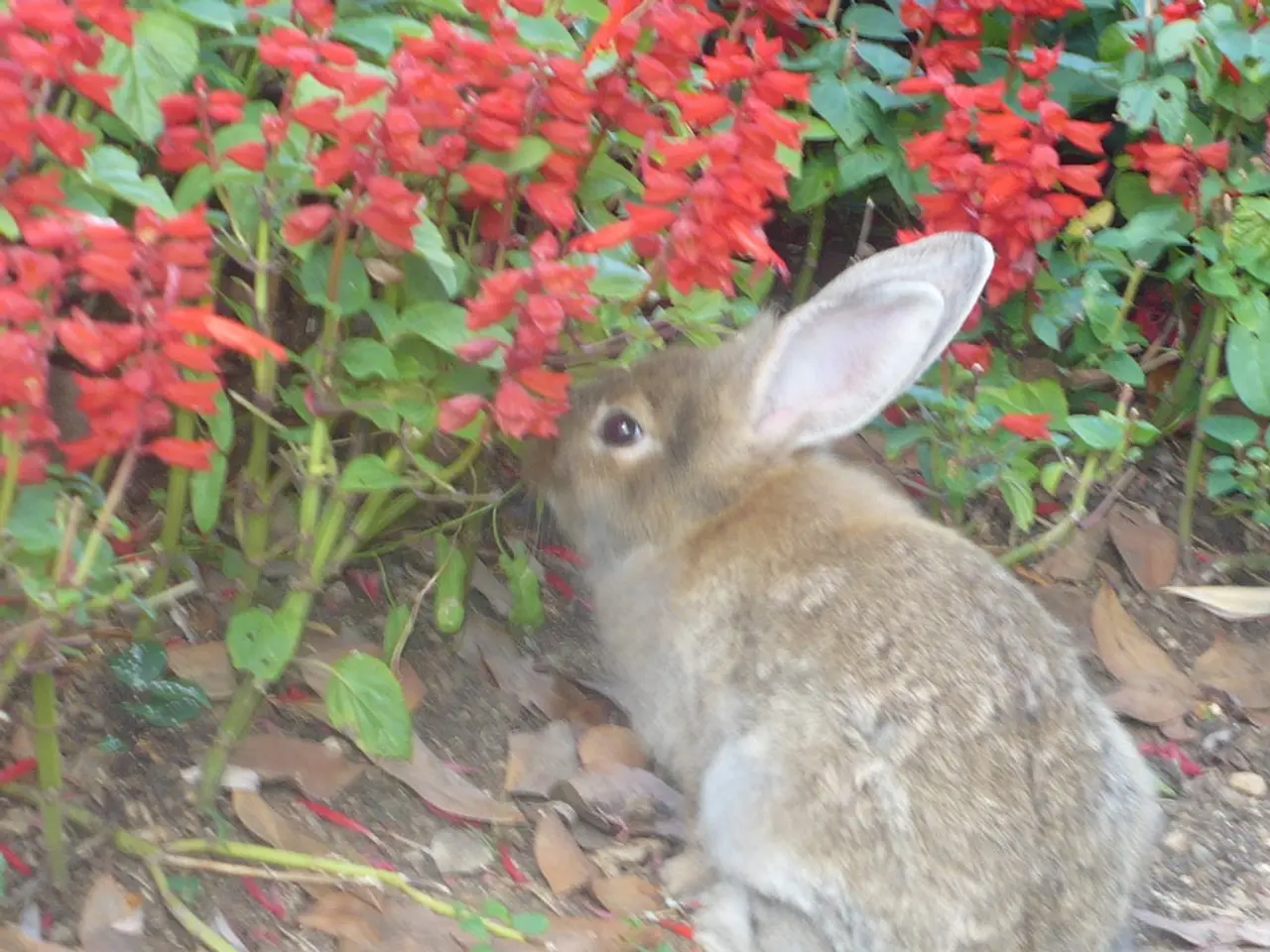Thirty-two distinct rabbit species
In the realm of adorable and captivating pets, rabbits hold a special place. With over 32 distinct breeds recognised worldwide, each boasts unique characteristics that set them apart. From the petite Netherland Dwarf to the towering Flemish Giant, these bunnies have captured hearts with their varied appearances and charming personalities.
One of the oldest breeds in the United States, the Belgian Hare, dates back to the 1880s. Known for its athletic build and alert pose, it stands at a maximum weight of 9.5 pounds. The Havana rabbit, first recognised by the American Rabbit Breeders Association (ARBA) in 1916, is compact and rounded, with a mink-like fur, weighing no more than 6.5 pounds.
The Dutch rabbit, a recognisable and popular breed, boasts a distinctive pattern of markings, while the Rex rabbit, known as the "king of rabbits" due to its short, dense, velvety fur, is another favourite. The Flemish giant, nicknamed the "gentle giant," is the biggest official rabbit breed, reaching up to 20 pounds.
The Blanc de Hotot rabbit, originating in Hotot-en-Auge in northern France, is white with a ring of black eyeliner. The English Spot, also known as the English rabbit, is a long-legged, active bunny with distinctive markings, weighing up to 8 pounds.
The Californian rabbit, one of the most popular in the United States, is typically white with black markings. The Himalayan rabbit, also known as the "Russian rabbit" or "Egyptian smut," is marked similarly to the Californian and has a unique, cylindrical body shape.
Other unique breeds include the Tan rabbit, which descends from a wild colony of rabbits in England and comes in four intense colors: black, blue, chocolate, and lilac (max weight 5.5 pounds); the Thrianta, a brilliant orange-red rabbit, nicknamed the "Fire of the Fancy" (max weight 6 pounds); the Jersey Wooly, a popular show breed known for its friendly, docile temperament and wooly coat (max weight 3.5 pounds); and the French lop, an enormous, heavy-boned rabbit with no maximum weight.
The Argente rabbit, with six types, of which three are recognised by the ARBA, has a stunning-colored coat with a different under color, giving them a frosty, silvery appearance (max weight around 11 pounds). The Holland lop is a small, lop-eared rabbit developed in the Netherlands.
The Lionhead rabbit is a small, friendly, and playful breed, while the Mini lop is a chunky, broad, and well-muscled rabbit. The Standard chinchilla rabbit is named for its color and silky soft texture and has no relation to the rodent chinchilla.
The Harlequin rabbit comes in two types: Japanese (orange or fawn with black, blue, chocolate or lilac) and magpie (white with black, blue, chocolate or lilac). The Checkered Giant is one of the largest breeds, developed in the US over a century ago, with no maximum weight (it comes in black or blue).
Lastly, the Angora rabbit, with its silky, luxurious wool, comes in several recognised breeds.
When it comes to feeding these diverse bunnies, a high-fiber diet forms the foundation. Timothy hay or similar grass hays such as orchard grass or Bermuda grass provide necessary fiber for digestion and dental health and are suitable for almost all breeds and ages, especially adults. Pellets made from alfalfa (for young rabbits) and grass hays (for adults) provide balanced vitamins and minerals, with adult rabbits getting pellets in limited amounts to avoid obesity.
Varied leafy greens and safe vegetables, such as dandelion leaves, clover, and herbs, mimic natural foraging and improve diet diversity without risking digestive upset. Natural herb and flower mixes, like Brown’s Tropical Carnival, encourage natural behaviours and are gentle on sensitive digestive systems, suitable as occasional treats across breeds.
Limit sugary treats like carrots or fruits as they can cause digestive issues like intermittent soft cecotropes, regardless of breed. Different breeds (such as mini Rex, lionhead, or meat rabbits) generally thrive on this same foundation but might have slightly different portion sizes or caloric needs depending on size, activity, and purpose (pet vs. meat).
In conclusion, the best foods emphasise high-fiber hay (Timothy or similar), quality pellets with essential nutrients, fresh leafy greens, and minimal sugary treats tailored in amount to the breed’s size and activity level. This approach supports all breeds’ digestion, dental health, and overall vitality.
- The Californian rabbit, a popular breed in the United States, shares similar markings with the Himalayan rabbit, which is also known as the "Russian rabbit" or "Egyptian smut."
- The Japanese Harlequin rabbit has distinct color patterns compared to the magpie Harlequin, with options for orange, fawn, black, blue, chocolate, or lilac markings.
- The petite Netherland Dwarf and the towering Flemish Giant are two contrasting breeds of rabbits, each holding a special place in the hearts of rabbit enthusiasts.
- The Lionhead rabbit, with its unique mane of long wool, is known for its friendly and playful demeanor, making it a favorite among pet owners.
- The Nations are known for their distinctive physical features, each with its own unique characteristics and temperament that set them apart in the world of pets.
- When it comes to grooming pets, the home-and-garden department often carries products suited for various breeds, such as the natural herb and flower mixes, like Brown’s Tropical Carnival.






